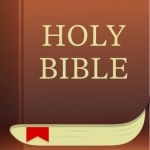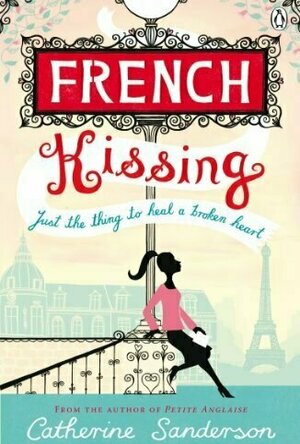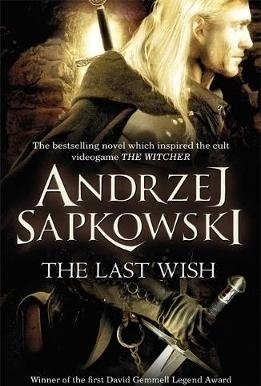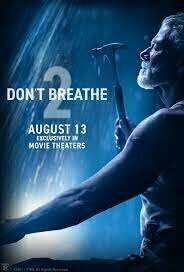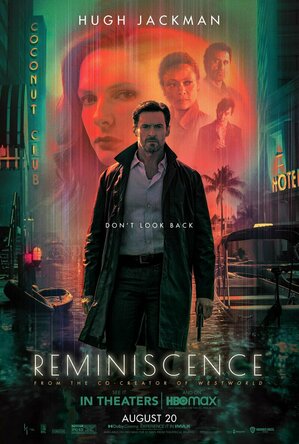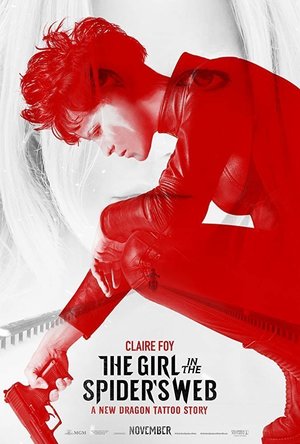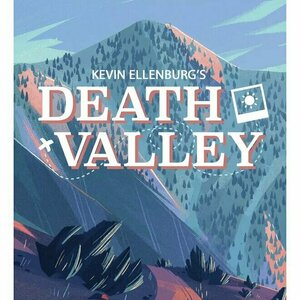Search
Search results

LiquidText Enterprise
Business and Productivity
App
* Includes the same features as our consumer version of LiquidText, but designed to work with...

DefTalk Messenger
Social Networking and Productivity
App
DefTalk is a next generation secure messenger. From now on, you can communicate with your business...
Ivana A. | Diary of Difference (1171 KP) rated French Kissing in Books
Aug 3, 2020
<a href="https://amzn.to/2Wi7amb">Wishlist</a>; | <a
<a href="https://diaryofdifference.com/">Blog</a>; | <a href="https://www.facebook.com/diaryofdifference/">Facebook</a>; | <a href="https://twitter.com/DiaryDifference">Twitter</a>; | <a href="https://www.instagram.com/diaryofdifference/">Instagram</a>; | <a href="https://www.pinterest.co.uk/diaryofdifference/pins/">Pinterest</a>;
<img src="https://diaryofdifference.com/wp-content/uploads/2020/07/Book-Review-Banner-65.png"/>;
<b><i>"French Kissing" by Catherine Sanderson is one of those romance novels you enjoy for a few days and then forget how it ended. </i></b>
<b>Synopsis:</b>
Sally Marshall decided to try a French online dating site. This was after she leaves her long-term boyfriend and Lila's father when she discovers he was cheating on her. With his secretary. After six months of healing, Sally is now ready to find her perfect match.
However, online dating has its downside. Meeting weird and creepy men, having one-night stands and being judged that she is a mother. Sally has to go through self-discovery in her journey to happiness.
<b>My Thoughts:</b>
"French Kissing" was average. It is very well written, but it follows a plot that, to me, has been overused by many writers, especially in the romance genre. It becomes another drop of water in the sea.
Sally is a very normal character and easy to love. She is struggling with the online dating. She believes she is at a disadvantage due to being a mother and her journey will teach her that she just hasn't met the right person yet. I am not a mother, and I don't know how Sally must truly feel, but I can imagine this situation being a big burden to her. Also, considering how men behave in today's world, where they want as little responsibility as possible and they are very reluctant to date women that already have children - I can understand how difficult this is for Sally. On the same aspect, this means that this is not Sally's fault. There is always someone out there that will be able to love her just the way she is - daughter included.
I liked the fact that this book was set in France. It gave a nice charm to it. However, on many occasions, there are French sentences with no explanation nor translation. If you don't understand French, you should buy a dictionary when you are buying this book. I can imagine this being an issue for many readers.
To conclude - it was an okay read. It will fill up your time nicely and bring you on an adventure of self-discovery. Perhaps you will also be able to connect with Sally on a whole new level. I wouldn't say "French Kissing" is a favorite, nor would I recommend it on the spot if someone asked me. However, if you love romances set in France with a focus on online dating - this might be worth your time.
<a href="https://diaryofdifference.com/">Blog</a>; | <a href="https://www.facebook.com/diaryofdifference/">Facebook</a>; | <a href="https://twitter.com/DiaryDifference">Twitter</a>; | <a href="https://www.instagram.com/diaryofdifference/">Instagram</a>; | <a href="https://www.pinterest.co.uk/diaryofdifference/pins/">Pinterest</a>;
<img src="https://diaryofdifference.com/wp-content/uploads/2020/07/Book-Review-Banner-65.png"/>;
<b><i>"French Kissing" by Catherine Sanderson is one of those romance novels you enjoy for a few days and then forget how it ended. </i></b>
<b>Synopsis:</b>
Sally Marshall decided to try a French online dating site. This was after she leaves her long-term boyfriend and Lila's father when she discovers he was cheating on her. With his secretary. After six months of healing, Sally is now ready to find her perfect match.
However, online dating has its downside. Meeting weird and creepy men, having one-night stands and being judged that she is a mother. Sally has to go through self-discovery in her journey to happiness.
<b>My Thoughts:</b>
"French Kissing" was average. It is very well written, but it follows a plot that, to me, has been overused by many writers, especially in the romance genre. It becomes another drop of water in the sea.
Sally is a very normal character and easy to love. She is struggling with the online dating. She believes she is at a disadvantage due to being a mother and her journey will teach her that she just hasn't met the right person yet. I am not a mother, and I don't know how Sally must truly feel, but I can imagine this situation being a big burden to her. Also, considering how men behave in today's world, where they want as little responsibility as possible and they are very reluctant to date women that already have children - I can understand how difficult this is for Sally. On the same aspect, this means that this is not Sally's fault. There is always someone out there that will be able to love her just the way she is - daughter included.
I liked the fact that this book was set in France. It gave a nice charm to it. However, on many occasions, there are French sentences with no explanation nor translation. If you don't understand French, you should buy a dictionary when you are buying this book. I can imagine this being an issue for many readers.
To conclude - it was an okay read. It will fill up your time nicely and bring you on an adventure of self-discovery. Perhaps you will also be able to connect with Sally on a whole new level. I wouldn't say "French Kissing" is a favorite, nor would I recommend it on the spot if someone asked me. However, if you love romances set in France with a focus on online dating - this might be worth your time.
Ivana A. | Diary of Difference (1171 KP) rated The Last Wish in Books
Aug 3, 2020
<a href="https://amzn.to/2Wi7amb">Wishlist</a>; | <a
<a href="https://diaryofdifference.com/">Blog</a>; | <a href="https://www.facebook.com/diaryofdifference/">Facebook</a>; | <a href="https://twitter.com/DiaryDifference">Twitter</a>; | <a href="https://www.instagram.com/diaryofdifference/">Instagram</a>; | <a href="https://www.pinterest.co.uk/diaryofdifference/pins/">Pinterest</a>;
#0.5 <a href="https://www.goodreads.com/review/show/3150137897">The Last Wish</a> - ★★★★
<img src="https://diaryofdifference.com/wp-content/uploads/2020/06/Book-Review-Banner-59.png"/>;
For me, The Last Wish is the perfect introduction to start the Witcher series and meet Geralt of Rivia.
<b>Synopsis</b>
The Last Wish is the prequel to the Witcher series. In this book we are introduced to Geralt of Rivia, a Witcher - a man whose magic powers and strength training made him a brilliant fighter and a merciless assassin.
However, Geralt is not an ordinary killer. He hunts the monsters that bring fear to people and creatures that attack the innocent.
But not everything is as seems, as some monsters are not evil, and not everything fair is good. In every fairy tale, there is a pinch of truth.
<b>My Thoughts:</b>
I loved the introduction of Geralt in this book. I have known Geralt from the video games, and then I watched the TV Show. Usually I am more attracted to the book characters rather than a movies/TV Show character, and this was no different. Even though, I have to admit that the video games and the TV Show are also extraordinary, when it comes to their characters. Geralt in this book is vivid and brave, and I was happy to follow him on the various adventures he went on.
The book is written in multiple chapters, each containing a call for a quest, and the following chapter containing the quest itself. Each quest is a completely different topic, all featuring Geralt, and many side characters joining him as we move along in the story.
Each chapter was magical on its own, and we get to meet various stories. We meet a girl that turned to a striga because of a curse. We encounter a beast hidden in a castle, a story that resembles the Beauty and the Beast. There are also stories that resemble the Snow White and Cinderella, all significantly darker and much more graphic in their retellings. I love how the author took those storylines and managed to create something much more sinister and cruel. Some of the stories also reminded me of the traditional Slavic folk tales, which brought back some nice feelings from my childhood too.
The last few chapters were the ones I enjoyed the most. Especially the moment when we get to meet Yennefer for the very first time. I cannot wait to read more about her in the books.
A truly beautiful and adventurous fantasy novel by Andrzej Sapkowski and published by Gollancz. I definitely recommend The Last Wish.
<a href="https://diaryofdifference.com/">Blog</a>; | <a href="https://www.facebook.com/diaryofdifference/">Facebook</a>; | <a href="https://twitter.com/DiaryDifference">Twitter</a>; | <a href="https://www.instagram.com/diaryofdifference/">Instagram</a>; | <a href="https://www.pinterest.co.uk/diaryofdifference/pins/">Pinterest</a>;
#0.5 <a href="https://www.goodreads.com/review/show/3150137897">The Last Wish</a> - ★★★★
<img src="https://diaryofdifference.com/wp-content/uploads/2020/06/Book-Review-Banner-59.png"/>;
For me, The Last Wish is the perfect introduction to start the Witcher series and meet Geralt of Rivia.
<b>Synopsis</b>
The Last Wish is the prequel to the Witcher series. In this book we are introduced to Geralt of Rivia, a Witcher - a man whose magic powers and strength training made him a brilliant fighter and a merciless assassin.
However, Geralt is not an ordinary killer. He hunts the monsters that bring fear to people and creatures that attack the innocent.
But not everything is as seems, as some monsters are not evil, and not everything fair is good. In every fairy tale, there is a pinch of truth.
<b>My Thoughts:</b>
I loved the introduction of Geralt in this book. I have known Geralt from the video games, and then I watched the TV Show. Usually I am more attracted to the book characters rather than a movies/TV Show character, and this was no different. Even though, I have to admit that the video games and the TV Show are also extraordinary, when it comes to their characters. Geralt in this book is vivid and brave, and I was happy to follow him on the various adventures he went on.
The book is written in multiple chapters, each containing a call for a quest, and the following chapter containing the quest itself. Each quest is a completely different topic, all featuring Geralt, and many side characters joining him as we move along in the story.
Each chapter was magical on its own, and we get to meet various stories. We meet a girl that turned to a striga because of a curse. We encounter a beast hidden in a castle, a story that resembles the Beauty and the Beast. There are also stories that resemble the Snow White and Cinderella, all significantly darker and much more graphic in their retellings. I love how the author took those storylines and managed to create something much more sinister and cruel. Some of the stories also reminded me of the traditional Slavic folk tales, which brought back some nice feelings from my childhood too.
The last few chapters were the ones I enjoyed the most. Especially the moment when we get to meet Yennefer for the very first time. I cannot wait to read more about her in the books.
A truly beautiful and adventurous fantasy novel by Andrzej Sapkowski and published by Gollancz. I definitely recommend The Last Wish.

Clean and Green Eating
Food & Drink and Health & Fitness
App
The Clean & Green Eating App includes an abundance of healthy recipes for the whole family to enjoy!...
Bob Mann (459 KP) rated Don't Breathe 2 (2021) in Movies
Aug 18, 2021
Nicely paced direction and non stop (bloody) action (1 more)
Madelyn Grace delivers a nice and professional performance
Not very original (1 more)
Should we be rooting for Norman at all?
That kid’ll need counselling for life!
I mean. If there was ever an opportunity to come up with a clever title for a sequel, this was it right? "Breathe Again"; "Hold it for a bit longer"; "Are You Turning Blue Yet?". But no... we just get a boring old "2" at the end!
Positives:
- Five years is an awfully long time to wait for a sequel! I have to admit I needed to read through my original review for "Don't Breathe" and the synopsis on IMDB before I went to see this. But, given that it is a fairly standard schlock-horror home-invasion movie, this is a nicely pieced together movie. Debut director Sayagues, who co-wrote the first film with original director Fede Alverez, moves the action along at a non-stop pace leaving you quite exhausted by the end of the (pleasantly short) 98 minutes.
- Stephen Lang nicely retreads his monster from the first movie as a besotted but anxious parent. But particularly good I thought was Madelyn Grace who plays the 11 year old Phoenix. I never once thought "there's a child actress doing a performance". Great job!
Negatives:
- It doesn't get many brownie points for originality: the blindness dice was already rolled in the original. So here we get some re-tread scenes of "the blind man being king", with red insecticide spray replacing the darkness.
- It never feels quite right that you are supposed to be cheering on Nordstrom: someone with virtually no redeeming features (other than a love for dogs).
- The original film had a decidedly icky moment with the whole baster thing. Here we have an equally icky, if ridiculous, plot-twist, taking us into a very dark place indeed. But what is supposed to be a shock-horror moment actually had me in fits of laughter, since all I could think of was a particular scene in "Monty Python and the Meaning of Life"!
Summary Thoughts on "Don't Breathe 2": We've been here so many times before that it's almost a (bloody) paint by numbers. But I have to admit that I thought this one was well done, and a cut above the norm. The first movie made $158M on a budget of just $10M. This one has a (restrained) $15M budget, and has already made that back. Good for them. The gore factor makes it not one for the illustrious Mrs Movie Man (who wisely didn't come). But for horror fans out for a nice gory little romp, this has its attractions.
And by the way, there is a 'monkey' (post-credit scene in One Mann's Movies speak) in this one. Well, Alvarez and Sayagues aren't going to dead-end their options for a "Don't Breathe 3" are they?
(For the full graphical review, please check out onemannsmovies on the web, Facebook and Tiktok. Thanks.)
Positives:
- Five years is an awfully long time to wait for a sequel! I have to admit I needed to read through my original review for "Don't Breathe" and the synopsis on IMDB before I went to see this. But, given that it is a fairly standard schlock-horror home-invasion movie, this is a nicely pieced together movie. Debut director Sayagues, who co-wrote the first film with original director Fede Alverez, moves the action along at a non-stop pace leaving you quite exhausted by the end of the (pleasantly short) 98 minutes.
- Stephen Lang nicely retreads his monster from the first movie as a besotted but anxious parent. But particularly good I thought was Madelyn Grace who plays the 11 year old Phoenix. I never once thought "there's a child actress doing a performance". Great job!
Negatives:
- It doesn't get many brownie points for originality: the blindness dice was already rolled in the original. So here we get some re-tread scenes of "the blind man being king", with red insecticide spray replacing the darkness.
- It never feels quite right that you are supposed to be cheering on Nordstrom: someone with virtually no redeeming features (other than a love for dogs).
- The original film had a decidedly icky moment with the whole baster thing. Here we have an equally icky, if ridiculous, plot-twist, taking us into a very dark place indeed. But what is supposed to be a shock-horror moment actually had me in fits of laughter, since all I could think of was a particular scene in "Monty Python and the Meaning of Life"!
Summary Thoughts on "Don't Breathe 2": We've been here so many times before that it's almost a (bloody) paint by numbers. But I have to admit that I thought this one was well done, and a cut above the norm. The first movie made $158M on a budget of just $10M. This one has a (restrained) $15M budget, and has already made that back. Good for them. The gore factor makes it not one for the illustrious Mrs Movie Man (who wisely didn't come). But for horror fans out for a nice gory little romp, this has its attractions.
And by the way, there is a 'monkey' (post-credit scene in One Mann's Movies speak) in this one. Well, Alvarez and Sayagues aren't going to dead-end their options for a "Don't Breathe 3" are they?
(For the full graphical review, please check out onemannsmovies on the web, Facebook and Tiktok. Thanks.)
Bob Mann (459 KP) rated Reminiscence (2021) in Movies
Aug 24, 2021
Soggy special effects. (1 more)
Ramin Djawadi's music score
I’ll only remember how disappointing it was.
It's the near future and global warming and a recent war have drastically changed life in Miami. The days are too hot to do anything other than sleep, and the oceans have risen deluging the city. Ex-military colleagues Nick Bannister (Hugh Jackman) and 'Watts' Sanders (Thandiwe Newton) run a 'reminiscence' business, allowing customers to re-experience memories from their past as if they were there. But when nightclub singer Mae (Rebecca Ferguson) begs for their help in finding her lost keys Nick's heart, life and livelihood are thrown into turmoil.
Positives:
- The special effects showing a submerged Miami are impressive enough.
- I enjoyed the soundtrack by "Westworld" and "Game of Thrones" composer Ramin Djawadi.
Negatives:
- The script is dreadful. Hugh Jackman's does a voiceover.... and regular readers of mine will know my feelings about those!!! Here he drones on incessantly about things like "memories being beads on time's necklace". Outside of the voiceover, the dialogue generally doesn't sound remotely like things that people would say to each other. There are some cringe-inducing segments of speechifying. That's when you can actually understand what's being said: I found the sound mix makes that really difficult with some of the lines.
- This seemed to me to be reflected in the performances of Jackman, Ferguson and Newton. Star-power indeed, but it appeared to me that they didn't have confidence in the words. Fans of the trio will, I think, be disappointed. (And I am a big fan of Rebecca Ferguson. She is again gorgeous here and - unlike in "The Greatest Showman" - actually gets to sing).
Summary Thoughts on "Reminiscence": This film is a big disappointment to me. When I first saw the trailer, I went "YES, YES, YES!!". It looked like an interesting post-apocalyptic sci-fi with perhaps elements of "Inception", "Waterworld" and "Flatliners" thrown in. Jackman even gets to tussle with sheets on a rooftop again! (Was anyone else playing "A Million Dreams" in their head?). But then came the film itself. The result was that about two-thirds in I was really willing it to end. (On principle, I don't walk out of movies). To be fair, the story did pick up slightly towards the conclusion, so I could quietly put my 1* rating away.
I really feel sorry for writer/director Lisa Joy for writing such a negative review. The executive producer of "Westworld" (who's also written and directed some episodes) had secured Jackman and brought some of her "Westworld" talent with her. I'm sure she put her heart and soul into this as her directorial feature debut. But I'm afraid it just did nothing for me and - given the talent available - came across as a wasted opportunity.
(For the full graphical review, please check out onemannsmovies on the web, Facebook and Tiktok. Thanks.)
Positives:
- The special effects showing a submerged Miami are impressive enough.
- I enjoyed the soundtrack by "Westworld" and "Game of Thrones" composer Ramin Djawadi.
Negatives:
- The script is dreadful. Hugh Jackman's does a voiceover.... and regular readers of mine will know my feelings about those!!! Here he drones on incessantly about things like "memories being beads on time's necklace". Outside of the voiceover, the dialogue generally doesn't sound remotely like things that people would say to each other. There are some cringe-inducing segments of speechifying. That's when you can actually understand what's being said: I found the sound mix makes that really difficult with some of the lines.
- This seemed to me to be reflected in the performances of Jackman, Ferguson and Newton. Star-power indeed, but it appeared to me that they didn't have confidence in the words. Fans of the trio will, I think, be disappointed. (And I am a big fan of Rebecca Ferguson. She is again gorgeous here and - unlike in "The Greatest Showman" - actually gets to sing).
Summary Thoughts on "Reminiscence": This film is a big disappointment to me. When I first saw the trailer, I went "YES, YES, YES!!". It looked like an interesting post-apocalyptic sci-fi with perhaps elements of "Inception", "Waterworld" and "Flatliners" thrown in. Jackman even gets to tussle with sheets on a rooftop again! (Was anyone else playing "A Million Dreams" in their head?). But then came the film itself. The result was that about two-thirds in I was really willing it to end. (On principle, I don't walk out of movies). To be fair, the story did pick up slightly towards the conclusion, so I could quietly put my 1* rating away.
I really feel sorry for writer/director Lisa Joy for writing such a negative review. The executive producer of "Westworld" (who's also written and directed some episodes) had secured Jackman and brought some of her "Westworld" talent with her. I'm sure she put her heart and soul into this as her directorial feature debut. But I'm afraid it just did nothing for me and - given the talent available - came across as a wasted opportunity.
(For the full graphical review, please check out onemannsmovies on the web, Facebook and Tiktok. Thanks.)
Bob Mann (459 KP) rated The Girl in the Spider's Web (2018) in Movies
Sep 28, 2021
Would the last straight woman in Stockholm turn off the lights?
You’ve gotta love a Scandi-thriller. Well, that was until last year’s hopeless Michael Fassbender vehicle “The Snowman” which devalued the currency better than Brexit has done to the pound! The mother of them all though was the original “Girl with the Dragon Tattoo” trilogy (in Swedish) in 2009. Although subject to a wholly unnecessary English remake two year’s later by David Fincher (with Mara Rooney and Daniel Craig) it was Noomi Rapace who struck the perfect note as the original anarchic and damaged Lisbeth Salander: a punk wielding a baseball bat like an alien-thing possessed (pun well and truly intended!).
Now though we have “A New Dragon Tattoo Story” (as the film’s subtitle clumsily declares) based on the book by David Lagercrantz, who took over the literary franchise after the untimely death of Stieg Larsson. Picking up the reins as Salander is that most British of actresses Claire Foy…. which seems an odd choice, but one which – after you get past the rather odd accent – she just about pulls off.
The Plot
Lizbeth Salendar (Claire Foy) has an interesting hobby. She is a vigilante, like a lesbian Batman, stalking the streets of Stockholm putting wrongs right where abusive boyfriends/husbands are concerned.
She is also a hacking machine for rent. And Frans Balder (Stephen Merchant) has a problem. He has invented a software program that allows its user to control every nuclear warhead in the world from a single laptop (cue every other Bond/24/Austin Powers script ever written). But he has had second thoughts and wants it back from its resting place on the server of the NSA’s chief hacker, Ed Needham (Lakeith Stanfield). Balder recruits Salander to recover it, but when things go pear-shaped Salander finds herself on the wrong side of both the law and the encircling terrorist “spiders”.
The Review
Scandi-dramas work best when they exploit the snow; maintain a sexual tension; and go dark, gritty and violent. On the plus side, “The Girl in the Spider’s Web” ticks most of those boxes adequately. Foy’s Salandar is smart, sassy and sexy, outwitting the best of the best, and only once finding her intellectual match. (If you’re a lesbian, Stockholm is most definitely the place to be: there only seemed to be one hetero-female there, and she was an adulteress).
But Salander also has a Bond-like invincibility that unfortunately tests your incredulity at multiple points. Contributing to the excitement is the stunt team, who keep themselves busy with some great car and bike chases.
So, the movie has its moments and is great to look at. But the film ends up a sandwich or two short of a smorgasbord, thanks largely to some totally bonkers plot points and more than a few ridiculous coincidences. There are without doubt an array of well-constructed set pieces here, but they fail to fully connect with any great conviction. An example of a scene that infuriates is a dramatic bathroom fight in a red-lit gloom with identical protagonists that is cut together so furiously you would need a Blu-ray slo-mo to work out what the hell is going on… and then I fear you might fail.
So it’s an A- for the Production Design (Eve Stewart, “The Danish Girl“) and the Cinematography (Pedro Luque, “Don’t Breathe“), but a C- for the director Fede Alvarez (also “Don’t Breathe“).
Avoid the Trailer
I will save my biggest source of wrath though for that major bug-bear of mine: trailers that spoil the plot.
I’ve asked before, but for a film like this, WHO EXACTLY PUTS TOGETHER THE TRAILER? I’d like to think it’s some mindless committee of marketing execs somewhere. Because I HONESTLY CAN’T BELIEVE it would be the director! (If I’m wrong though, I would point my finger at Mr Alvarez and chant “shame, shame, shame”!)
For the trailer that I saw playing in UK cinemas does it’s level best to not only drop in the key spoilers of the plot (including the climactic scene), but also spoils just about every action money-shot in the movie. It’s all so pointless. If you’ve by any chance managed to get to this point without seeing the trailer, then SAVE YOURSELVES and AVOID IT!
(The one attached below by the way is slightly – slightly! – better, including some over-dubbing of a line that I don’t think was in the film. Perhaps they realised their huge mistake and reissued it?)
The Turns
As I mentioned earlier, Claire Foy again extends her range by playing Salander really well. She is the reason to go and see the film.
The Daniel Craig part of Blomkvist is played here by Sverrir Gudnason, who was in “The Circle” (which I saw) and was Borg in “Borg McEnroe” (which I didn’t). Blomkvist really is a lazy ****, since he works for the publication “Millenium” but writes absolutely nothing for years. It must be only because the boss (Vicky Krieps) fancies him that he keeps his job. Gudnason is good enough, but has very little to do in the movie: its the Salander/Foy show. Slightly, but only slightly, more involved is Lakeith Standfield as the US intelligence man.
Given little to do in the plot. Sverrir Gudnason as the incredibly unproductive ‘journalist’ Mikael Blomkvist. (Source: Sony Pictures Entertainment)
Stephen Merchant is an odd casting choice for Balder. Not withstanding that he was brilliant when almost unrecognisable in “Logan“, here he looks far too much like his “Ricky Gervais sidekick” persona to be taken seriously: and it’s not even remotely a comedy (there is only one humorous moment in the film, a nice “clicker” gag in a car park).
Final Thoughts
I had high hopes for this film from the trailer, but I was left disappointed. It’s not classic Scandi-noir like the original “Tattoo”; and it’s not going for the black comedy angle of “Headhunters” (which I saw again last week and loved… again!). It falls into a rather “meh” category. It’s not a bad evening’s watch, but perhaps worth leaving for a DVD/cable showing.
Now though we have “A New Dragon Tattoo Story” (as the film’s subtitle clumsily declares) based on the book by David Lagercrantz, who took over the literary franchise after the untimely death of Stieg Larsson. Picking up the reins as Salander is that most British of actresses Claire Foy…. which seems an odd choice, but one which – after you get past the rather odd accent – she just about pulls off.
The Plot
Lizbeth Salendar (Claire Foy) has an interesting hobby. She is a vigilante, like a lesbian Batman, stalking the streets of Stockholm putting wrongs right where abusive boyfriends/husbands are concerned.
She is also a hacking machine for rent. And Frans Balder (Stephen Merchant) has a problem. He has invented a software program that allows its user to control every nuclear warhead in the world from a single laptop (cue every other Bond/24/Austin Powers script ever written). But he has had second thoughts and wants it back from its resting place on the server of the NSA’s chief hacker, Ed Needham (Lakeith Stanfield). Balder recruits Salander to recover it, but when things go pear-shaped Salander finds herself on the wrong side of both the law and the encircling terrorist “spiders”.
The Review
Scandi-dramas work best when they exploit the snow; maintain a sexual tension; and go dark, gritty and violent. On the plus side, “The Girl in the Spider’s Web” ticks most of those boxes adequately. Foy’s Salandar is smart, sassy and sexy, outwitting the best of the best, and only once finding her intellectual match. (If you’re a lesbian, Stockholm is most definitely the place to be: there only seemed to be one hetero-female there, and she was an adulteress).
But Salander also has a Bond-like invincibility that unfortunately tests your incredulity at multiple points. Contributing to the excitement is the stunt team, who keep themselves busy with some great car and bike chases.
So, the movie has its moments and is great to look at. But the film ends up a sandwich or two short of a smorgasbord, thanks largely to some totally bonkers plot points and more than a few ridiculous coincidences. There are without doubt an array of well-constructed set pieces here, but they fail to fully connect with any great conviction. An example of a scene that infuriates is a dramatic bathroom fight in a red-lit gloom with identical protagonists that is cut together so furiously you would need a Blu-ray slo-mo to work out what the hell is going on… and then I fear you might fail.
So it’s an A- for the Production Design (Eve Stewart, “The Danish Girl“) and the Cinematography (Pedro Luque, “Don’t Breathe“), but a C- for the director Fede Alvarez (also “Don’t Breathe“).
Avoid the Trailer
I will save my biggest source of wrath though for that major bug-bear of mine: trailers that spoil the plot.
I’ve asked before, but for a film like this, WHO EXACTLY PUTS TOGETHER THE TRAILER? I’d like to think it’s some mindless committee of marketing execs somewhere. Because I HONESTLY CAN’T BELIEVE it would be the director! (If I’m wrong though, I would point my finger at Mr Alvarez and chant “shame, shame, shame”!)
For the trailer that I saw playing in UK cinemas does it’s level best to not only drop in the key spoilers of the plot (including the climactic scene), but also spoils just about every action money-shot in the movie. It’s all so pointless. If you’ve by any chance managed to get to this point without seeing the trailer, then SAVE YOURSELVES and AVOID IT!
(The one attached below by the way is slightly – slightly! – better, including some over-dubbing of a line that I don’t think was in the film. Perhaps they realised their huge mistake and reissued it?)
The Turns
As I mentioned earlier, Claire Foy again extends her range by playing Salander really well. She is the reason to go and see the film.
The Daniel Craig part of Blomkvist is played here by Sverrir Gudnason, who was in “The Circle” (which I saw) and was Borg in “Borg McEnroe” (which I didn’t). Blomkvist really is a lazy ****, since he works for the publication “Millenium” but writes absolutely nothing for years. It must be only because the boss (Vicky Krieps) fancies him that he keeps his job. Gudnason is good enough, but has very little to do in the movie: its the Salander/Foy show. Slightly, but only slightly, more involved is Lakeith Standfield as the US intelligence man.
Given little to do in the plot. Sverrir Gudnason as the incredibly unproductive ‘journalist’ Mikael Blomkvist. (Source: Sony Pictures Entertainment)
Stephen Merchant is an odd casting choice for Balder. Not withstanding that he was brilliant when almost unrecognisable in “Logan“, here he looks far too much like his “Ricky Gervais sidekick” persona to be taken seriously: and it’s not even remotely a comedy (there is only one humorous moment in the film, a nice “clicker” gag in a car park).
Final Thoughts
I had high hopes for this film from the trailer, but I was left disappointed. It’s not classic Scandi-noir like the original “Tattoo”; and it’s not going for the black comedy angle of “Headhunters” (which I saw again last week and loved… again!). It falls into a rather “meh” category. It’s not a bad evening’s watch, but perhaps worth leaving for a DVD/cable showing.
Purple Phoenix Games (2266 KP) rated Death Valley in Tabletop Games
Jan 18, 2022
This past summer, 2021, I had the opportunity to visit Las Vegas for the first time in my life. The casinos, the strip, the lights – everything was over-the-top and pretty impressive. But my trip took me beyond the city borders, as I got to visit several national parks and see some unique landmarks as well. One of which being Death Valley National Park. They’re not lying with the name – during my trip there, the temperature climbed to over 110°F. Does this pocket-sized game about the real-life location do justice to the scorching scenery? Keep reading to find out!
Death Valley is a game for 1-2 players in which you are documenting your journey across the Death Valley park. You will see different sights on your journey, and add cherished memories to your scrapbook. The player who amasses the most points by the end of the game is the winner! To setup for a game, shuffle the deck of Feature cards and reveal one face-up while the rest remain in a face-down deck. These cards make up the Desert. That’s it. The game is ready to start! Choose a starting player and get to sight-seeing!
Throughout the game, players will be adding Feature cards to their Journey tableau (places they have visited) and their Scrapbook tableau (the more memorable locations). On your turn, you will perform one of 2 actions: Travel or Rest. When you choose to Travel, you will select either the Feature card from the Desert (the face-up card), or draw the top card from the face-down deck and add it to your Journey. Conversely, when you choose to Rest, you will move a Feature card from your Journey into your Scrapbook. When moving Feature cards to your Scrapbook, you are allowed to hide other cards from your Journey underneath that card. Hiding cards can be beneficial for end-game points, or for preventing you from Busting. Many Feature cards have additional text at the bottom, that either provides ongoing abilities for the remainder of the game, or that provide extra scoring abilities at the end of the game. Choosing which Feature cards to move when and where is key!
After you have performed your chosen Action, you check to see if you Bust. If you have 3 Feature cards of the same type in your Journey and Scrapbook, you Bust! To resolve a Bust, you will discard from the game the right-most card in your Journey, and then will re-shuffle any remaining Journey cards back into the draw deck. So there’s a small element of push-your-luck in here! Once you resolve a Bust (if necessary), you will refresh the Desert – reveal a new face-up card if you just took the face-up card this turn. Your turn then ends, and play moves to your opponent. The game continues in this fashion, with players drawing/placing/moving Feature cards in their 2 tableaus, until only 1 card remains in the Desert. Points are then tallied: 1 point per Star on cards visible in your Journey, and points based on the extra scoring abilities of cards in your Journey and/or Scrapbook. The player with the highest score is declared the winner!
So, let’s get into this gameplay. For being a 2-player game, I appreciate that it’s not necessarily directly competitive. Yes, you want to score more points at the end of the game, but there really isn’t any player interaction, which keeps the energy level of the game more low-key. That being said, it’s decently strategic. Some Feature cards provide on-going abilities that can be used throughout the game, and can help you get some benefit out of a Bust. Certain card abilities rely on adjacency of other cards, so you have to know when/where to place a card to get the most points for the end of the game. That being said, you also have to make sure you don’t Bust. Luckily, you don’t resolve/check for a Bust until after you have performed your action, so perhaps you are able to sneak by with some clever planning. One part of the gameplay that misses the mark for me is the fact that you can only perform 1 Action per turn. I feel like that can really inhibit your ability to strategize, and makes it difficult to feel like you’re accomplishing something on your turns. Maybe if players had to perform both Actions per turn (either Travel/Rest, or vice versa), it would offer a few more options in terms of strategy. I just personally feel like taking only 1 Action per turn makes the gameplay a little too choppy, and makes it hard to really get into – especially when the game itself is so short. Maybe I’m not thinking strategically enough, but these are my thoughts thus far with Death Valley!
Components. As to be expected from ButtonShy – excellent quality of the cards and wallet. The artwork is colorful and thematic, and I just like looking at the different locations represented in the game. This game is satisfying to look at, and it earns high marks from me. Another neat thing? Each Feature card has a little interesting fact about its location, so you can learn a neat tidbit while playing the game!
Nothing can really compare to seeing Death Valley in person, but this game does offer a nice representation. The beauty of the location artwork coupled with the interesting facts has me intrigued outside of the game itself. The gameplay isn’t necessarily a home-run in my eyes, but it is strategic enough that I know I’ll keep pulling this one out from time to time. There is a solo mode, as well as a variant to give you more of a press-your-luck element, and I will definitely be trying those to see if they change my thoughts on this game. But for the time being, Purple Phoenix Games gives Death Valley a singed 4 / 6.
Death Valley is a game for 1-2 players in which you are documenting your journey across the Death Valley park. You will see different sights on your journey, and add cherished memories to your scrapbook. The player who amasses the most points by the end of the game is the winner! To setup for a game, shuffle the deck of Feature cards and reveal one face-up while the rest remain in a face-down deck. These cards make up the Desert. That’s it. The game is ready to start! Choose a starting player and get to sight-seeing!
Throughout the game, players will be adding Feature cards to their Journey tableau (places they have visited) and their Scrapbook tableau (the more memorable locations). On your turn, you will perform one of 2 actions: Travel or Rest. When you choose to Travel, you will select either the Feature card from the Desert (the face-up card), or draw the top card from the face-down deck and add it to your Journey. Conversely, when you choose to Rest, you will move a Feature card from your Journey into your Scrapbook. When moving Feature cards to your Scrapbook, you are allowed to hide other cards from your Journey underneath that card. Hiding cards can be beneficial for end-game points, or for preventing you from Busting. Many Feature cards have additional text at the bottom, that either provides ongoing abilities for the remainder of the game, or that provide extra scoring abilities at the end of the game. Choosing which Feature cards to move when and where is key!
After you have performed your chosen Action, you check to see if you Bust. If you have 3 Feature cards of the same type in your Journey and Scrapbook, you Bust! To resolve a Bust, you will discard from the game the right-most card in your Journey, and then will re-shuffle any remaining Journey cards back into the draw deck. So there’s a small element of push-your-luck in here! Once you resolve a Bust (if necessary), you will refresh the Desert – reveal a new face-up card if you just took the face-up card this turn. Your turn then ends, and play moves to your opponent. The game continues in this fashion, with players drawing/placing/moving Feature cards in their 2 tableaus, until only 1 card remains in the Desert. Points are then tallied: 1 point per Star on cards visible in your Journey, and points based on the extra scoring abilities of cards in your Journey and/or Scrapbook. The player with the highest score is declared the winner!
So, let’s get into this gameplay. For being a 2-player game, I appreciate that it’s not necessarily directly competitive. Yes, you want to score more points at the end of the game, but there really isn’t any player interaction, which keeps the energy level of the game more low-key. That being said, it’s decently strategic. Some Feature cards provide on-going abilities that can be used throughout the game, and can help you get some benefit out of a Bust. Certain card abilities rely on adjacency of other cards, so you have to know when/where to place a card to get the most points for the end of the game. That being said, you also have to make sure you don’t Bust. Luckily, you don’t resolve/check for a Bust until after you have performed your action, so perhaps you are able to sneak by with some clever planning. One part of the gameplay that misses the mark for me is the fact that you can only perform 1 Action per turn. I feel like that can really inhibit your ability to strategize, and makes it difficult to feel like you’re accomplishing something on your turns. Maybe if players had to perform both Actions per turn (either Travel/Rest, or vice versa), it would offer a few more options in terms of strategy. I just personally feel like taking only 1 Action per turn makes the gameplay a little too choppy, and makes it hard to really get into – especially when the game itself is so short. Maybe I’m not thinking strategically enough, but these are my thoughts thus far with Death Valley!
Components. As to be expected from ButtonShy – excellent quality of the cards and wallet. The artwork is colorful and thematic, and I just like looking at the different locations represented in the game. This game is satisfying to look at, and it earns high marks from me. Another neat thing? Each Feature card has a little interesting fact about its location, so you can learn a neat tidbit while playing the game!
Nothing can really compare to seeing Death Valley in person, but this game does offer a nice representation. The beauty of the location artwork coupled with the interesting facts has me intrigued outside of the game itself. The gameplay isn’t necessarily a home-run in my eyes, but it is strategic enough that I know I’ll keep pulling this one out from time to time. There is a solo mode, as well as a variant to give you more of a press-your-luck element, and I will definitely be trying those to see if they change my thoughts on this game. But for the time being, Purple Phoenix Games gives Death Valley a singed 4 / 6.
